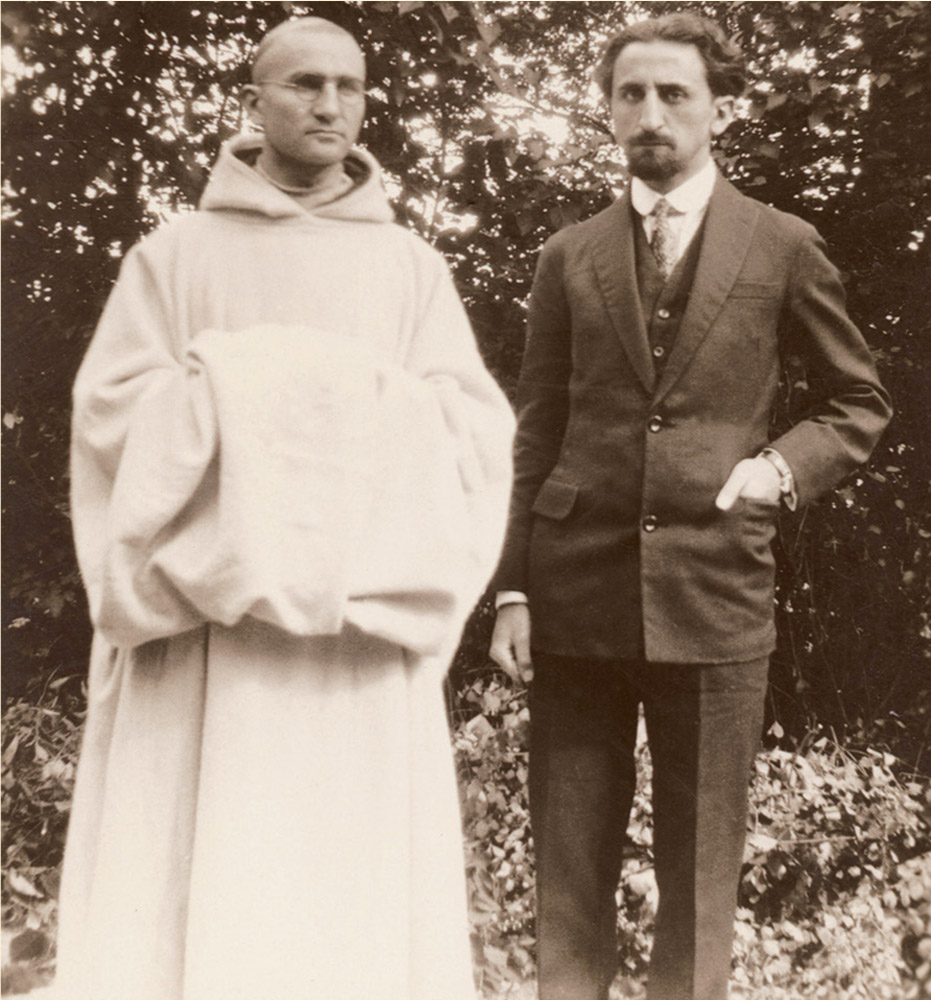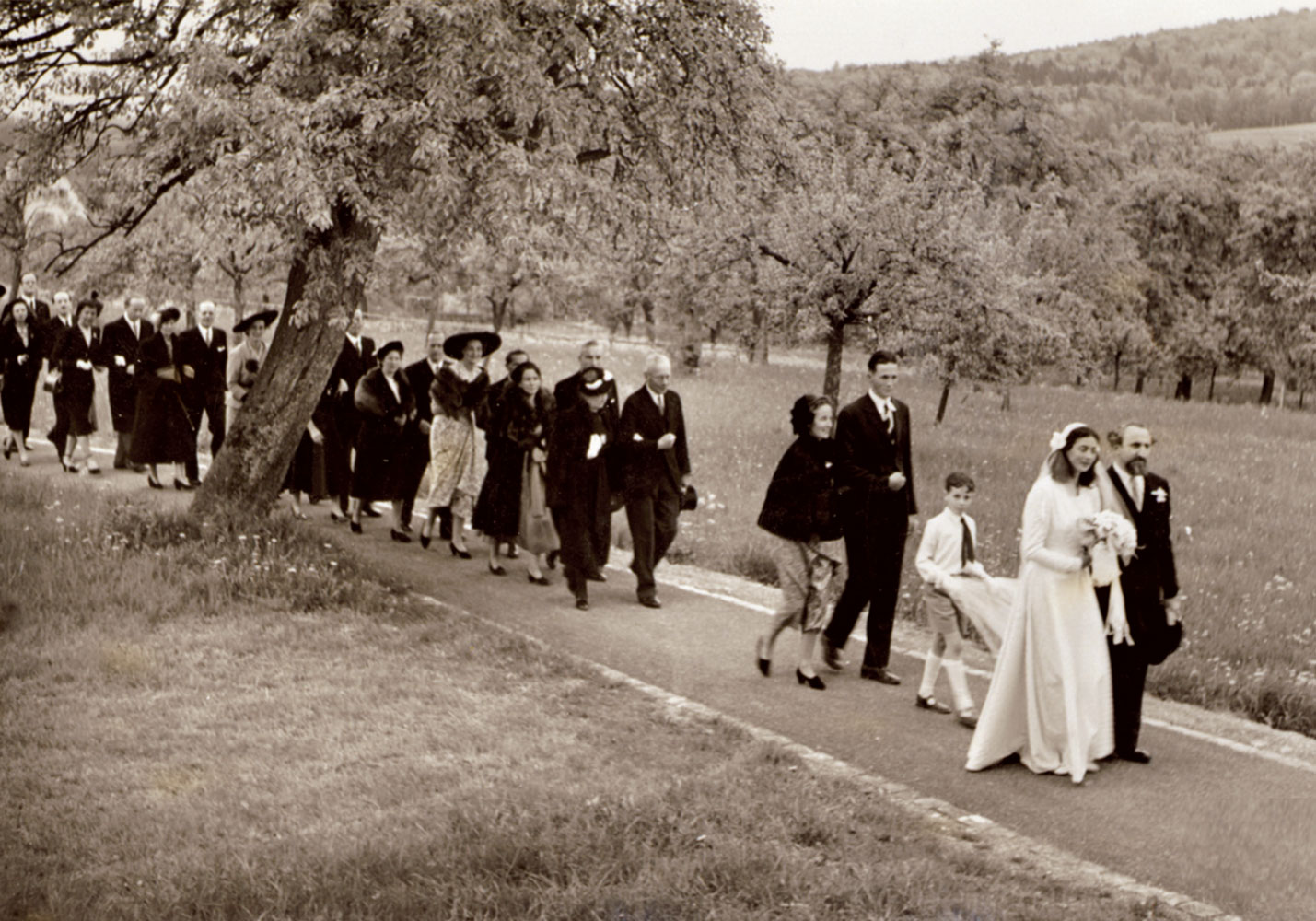
Frithjof Schuon Archive

Photo Gallery
 Frithjof Schuon in 1912 (5 years old)
Frithjof Schuon in 1912 (5 years old) Frithjof Schuon in 1916
Frithjof Schuon in 1916 Frithjof Schuon around 1917
Frithjof Schuon around 1917 The young Frithjof Schuon (far left) with his father, mother, and older brother in Basel in 1917
The young Frithjof Schuon (far left) with his father, mother, and older brother in Basel in 1917 Frithjof Schuon around 1920
Frithjof Schuon around 1920 Frithjof Schuon in 1920
Frithjof Schuon in 1920 Frithjof Schuon with his mother (Margarete), and his brother (Erich), 1923
Frithjof Schuon with his mother (Margarete), and his brother (Erich), 1923 Schuon with his maternal grandmother, around 1924
Schuon with his maternal grandmother, around 1924 Frithjof Schuon around 1929
Frithjof Schuon around 1929 Schuon in Paris, 1929
Schuon in Paris, 1929 Frithjof Schuon in Paris around 1931
Frithjof Schuon in Paris around 1931 Frithjof Schuon with Father Gall (Erich Schuon) at the Abbey of Notre-Dame de Scourmont, Belgium, 1932
Frithjof Schuon with Father Gall (Erich Schuon) at the Abbey of Notre-Dame de Scourmont, Belgium, 1932 Frithjof Schuon in 1935
Frithjof Schuon in 1935 Schuon at the pyramids, Cairo, 1938
Schuon at the pyramids, Cairo, 1938 Frithjof Schuon with René Guénon in Cairo, 1938
Frithjof Schuon with René Guénon in Cairo, 1938 Frithjof Schuon on board the ship to India, via Africa, 1939
Frithjof Schuon on board the ship to India, via Africa, 1939 Frithjof Schuon with Father Gall (Erich Schuon) in French army uniform, 1939
Frithjof Schuon with Father Gall (Erich Schuon) in French army uniform, 1939 Schuon in Lausanne, 1941
Schuon in Lausanne, 1941 The Schuon bridal procession, 1949
The Schuon bridal procession, 1949 The Schuons’ home, near Lausanne
The Schuons’ home, near Lausanne Schuon’s combined bedroom and prayer room, Lausanne
Schuon’s combined bedroom and prayer room, Lausanne Catherine Schuon, Susie Yellowtail, Thomas Yellowtail, and Frithjof Schuon, Switzerland, 1953
Catherine Schuon, Susie Yellowtail, Thomas Yellowtail, and Frithjof Schuon, Switzerland, 1953 Schuon with his cat, Tigerli—the “little tiger”, 1956
Schuon with his cat, Tigerli—the “little tiger”, 1956 Schuon with Chief James Red Cloud, 1959
Schuon with Chief James Red Cloud, 1959 Frithjof Schuon in the Swiss Alps in the 1960s
Frithjof Schuon in the Swiss Alps in the 1960s Jackson One Feather, Ben Black Elk, and Schuon, 1963
Jackson One Feather, Ben Black Elk, and Schuon, 1963 Barbara Perry, Frithjof Schuon, Catherine Schuon, and Whitall Perry
Barbara Perry, Frithjof Schuon, Catherine Schuon, and Whitall Perry Frithjof Schuon at the Matterhorn
Frithjof Schuon at the Matterhorn The chalet at Verbier used by the Schuons
The chalet at Verbier used by the Schuons Frithjof Schuon, Catherine Schuon, Barbara Perry, and Whitall Perry, Lausanne, c. 1964.
Frithjof Schuon, Catherine Schuon, Barbara Perry, and Whitall Perry, Lausanne, c. 1964. Frithjof Schuon in 1964
Frithjof Schuon in 1964 Frithjof Schuon, 1965
Frithjof Schuon, 1965 Frithjof and Catherine Schuon in Venice at San Marco
Frithjof and Catherine Schuon in Venice at San Marco Frithjof Schuon in 1968
Frithjof Schuon in 1968 Frithjof Schuon at the house of the Blessed Virgin, outside Ephesus, 1968
Frithjof Schuon at the house of the Blessed Virgin, outside Ephesus, 1968 Frithjof Schuon with Titus Burckhardt in the Swiss Alps, c. 1970
Frithjof Schuon with Titus Burckhardt in the Swiss Alps, c. 1970 Frithjof Schuon in 1974
Frithjof Schuon in 1974 Frithjof Schuon
Frithjof Schuon Frithjof Schuon
Frithjof Schuon Frithjof Schuon
Frithjof Schuon Frithjof Schuon
Frithjof Schuon Frithjof Schuon with Thomas Yellowtail beside the tipi in the Schuons’ garden in Bloomington, Indiana, autumn 1983
Frithjof Schuon with Thomas Yellowtail beside the tipi in the Schuons’ garden in Bloomington, Indiana, autumn 1983 Frithjof Schuon, 1989
Frithjof Schuon, 1989 Frithjof Schuon, circa 1990
Frithjof Schuon, circa 1990 Schuon in later years in the woods near his home in Bloomington, Indiana
Schuon in later years in the woods near his home in Bloomington, Indiana Sunrise over the Schuons’ home, autumn 1981
Sunrise over the Schuons’ home, autumn 1981 Schuon at his desk in his study at home in Bloomington
Schuon at his desk in his study at home in Bloomington Frithjof Schuon in front of his home in Bloomington, around 1990
Frithjof Schuon in front of his home in Bloomington, around 1990 The entryway of the Schuons’ home, Bloomington
The entryway of the Schuons’ home, Bloomington The living room of the Schuons’ home, Bloomington
The living room of the Schuons’ home, Bloomington Schuon on his veranda, 1995
Schuon on his veranda, 1995 Frithjof Schuon at his desk, around 1995
Frithjof Schuon at his desk, around 1995
Featured Books
Gnosis – Göttliche Weisheit
The first part of the book deals with questions related to the diversity of religious traditions; the second with metaphysical and anthropological topics, including the insightful essay “Seeing God Everywhere”; the third is devoted to Christianity from the point of view of gnosis.
Featured Poems
Adastra and Stella Maris: Poems by Frithjof Schuon-Home-coming
Apokatastasis: return of all values,
Adastra and Stella Maris: Poems by Frithjof Schuon-His Will
Mâ shâ’ Allâh: God doeth what He will.
Adastra and Stella Maris: Poems by Frithjof Schuon-The Ray
A dream-web in a thousand webs of dreams,
Featured Articles
The Elect and the Predestination of Knowledge: ‘Esoterism’ and ‘Exclusivism’: A Schuonian Perspective
The author of the essay states his purpose thus: “This paper considers the idea of the elite, or elect, with respect to the problems of Predestination and the notion of the exclusivity of esotericism. It is our opinion that the questions raised here can only be resolved in light of the metaphysical knowledge that is the proper subject of esotericism, where, as said, this is understood as the sophia perennis. Frithjof Schuon stands as the pre-eminent voice of the sophia perennis for our day and age and it is thus that this paper is largely a reiteration of what he has said on these points.”
The Mystery of the Two Natures
Combining a Socratic and a personal approach, Cutsinger looks to the writings and insights of Frithjof Schuon to examine “how in good conscience can a traditional Christian accept the idea that there is a ‘transcendental unity of religions’?” The author finds answers in a deeper understanding of Christ’s two natures: human and Divine.
